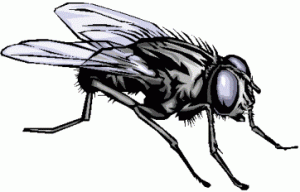Fly control

Each fly carries around six million micro-organisms on its body after a period in the faeces or waste. Bacteria that cause dysentery and similar diseases do not breed in the fly’s intestinal tube, but emerge fully viable. This is why the fight against crabs and the observance of hygiene rules are very important in preventing intestinal infections.
Location of nests: in areas heated by humans. Manure, faeces, all kinds of debris are also the feeding habitat of the house fly. They are also attracted by sewer pipes.
Life cycle: Adult flies have a lifespan of 15-20 days, but can live up to 2 months. They can only survive for three days without food. The availability of food, especially sugar, prolongs the lifespan of flies.
Damage caused: The fly is a mechanical vector of pathogens. Fly eggs are almost invisible and can cause intestinal poisoning if swallowed. Especially for young children.
Frequency of treatments: as needed.
Conditions for control: Initially, the areas where the house sparrow can breed must be identified. It is necessary to eliminate surfaces that are attractants for caterpillars and where they can breed. Keep doors, windows and ventilation openings closed to prevent house flies from entering the interior. Cover other entry openings with netting or seal with gaskets.
Mistakes that are made: Poor sanitary conditions.
What tools do we use and how quickly do they work? An ultraviolet lamp and also flypaper are quite effective. In the case of a mass occurrence, spraying with a quick-acting formulation, which takes off more mass, is also justified.
